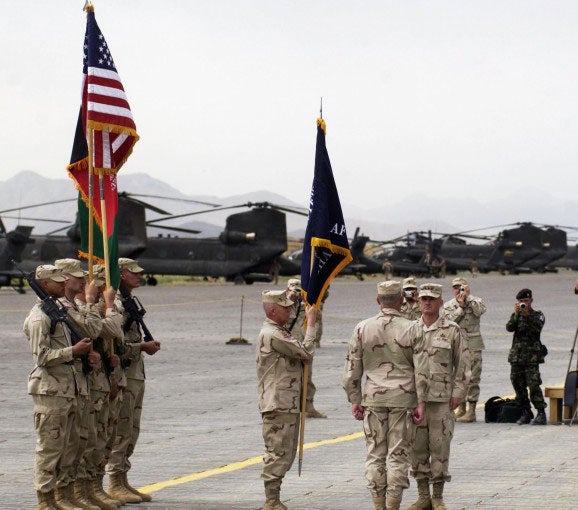Bagram detention centre now twice the size of Guantanamo

The United States has quietly expanded the number of "enemy combatants" being held in judicial limbo at its Bagram military base in Afghanistan, a facility which has now grown to more than twice the size of the controversial and much more widely discussed military prison at Guantanamo Bay in Cuba.
Bagram has received just a fraction of the world attention paid to Guantanamo, but the two facilities have prompted very similar complaints about prisoners held incommunicado for weeks or months, the lack of recourse to any system of legal redress, and persistent reports of prisoner mistreatment that many human rights campaigners have characterised as torture.
The New York Times, which has seen confidential documents relating to the running of the Bagram prison, reported yesterday that the military base north of Kabul now contains around 630 prisoners, a far greater number than the 275 still being held at a rapidly emptying Guantanamo.
Although conditions are generally reckoned to have improved at Bagram since December 2002, when US officials admitted that its guards beat two Afghan prisoners to death, the base's warren of isolation cells have still prompted high-level complaints from the International Committee of the Red Cross (ICRC).
As recently as last summer, the ICRC complained that prisoners were being denied access to its inspectors for weeks or months at a time, and were sometimes subjected to cruel treatment in violation of the Geneva Conventions, the newspaper reported.
"The problem at Bagram hasn't gone away," said the human rights lawyer, Tina Foster, who has filed numerous lawsuits on behalf of the detainees. "The government has just done a better job of keeping it secret."
Prisoner numbers have swelled because of the ever deteriorating security situation in Afghanistan, and the mounting threat posed by the resurgent Taliban to the fractious pro-American government headed by Hamid Karzai. Since 2005, US officials have harboured plans to hand over the prisoners to the Afghan authorities, who would house them at a brand new $30m (15m) facility financed by the United States on the outskirts of Kabul.
Every aspect of the handover has been mired in problems, however, with the Afghans raising objections to US attempts to persuade them to establish a similar home-grown regime of indefinite detentions and trial by military commission already endorsed by the Bush administration, and the Americans fearing for the security and day-to-day conditions of the proposed new facility.
The agreement first broke down in 2006, soon after a high-security detention centre run by the Afghan military began its US-sponsored overhaul, when President Karzai refused to sign a decree establishing a legal framework for the prisoners based on the discredited Guantanamo model.
The plan then hit crisis point last May when two US soldiers overseeing the project were shot dead by a suspected Taliban sympathiser who had infiltrated the guard corps. The killings led to two months of vetting of the other guards and the dismissal of almost two dozen trained recruits, according to The New York Times.
The first 12 Bagram detainees moved into the new facility at Pul-i-Charkhi prison in April 2006, and those numbers grew to 157 over the next nine months, including 32 transferred from Guantanamo. Despite initial American concerns that the Afghans could not be trusted to imprison such "enemy combatants", it now appears that some prisoners will remain at Bagram indefinitely.
Join our commenting forum
Join thought-provoking conversations, follow other Independent readers and see their replies
0Comments